|
Arado Ar 66 / Nachtschlacht
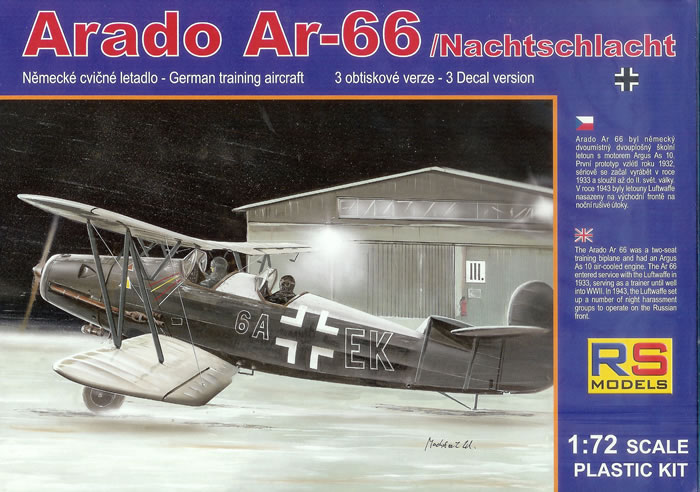
RS Model, 1/72 scale
S u m m a r y : |
Catalogue Numbers: |
RS Model Kit Nos. 92052 (twin-seat) & 92063 (single-seat) - Arado Ar 66 / Nachtschlacht |
Scale: |
1/72 |
Contents & Media: |
54 x grey styrene airframe parts, 2 x clear styrene windscreens and decals for three aircraft in each case. |
Price: |
Available online from Hannants for £12.26, Squadron for US$22.36 (92052) & US$23.76 (92063), Modelimex for €14.60 (Click here for currency conversion) |
Review Type: |
First Look |
Advantages: |
Straightforward, superb seats, good selection of colour schemes |
Disadvantages: |
No engine detail, cockpit cover for the singe-seat version could have been better addressed. |
Conclusions: |
Generally well executed kits that should result in nice models without too much fuss. |
Reviewed by Mark Davies

Valom's 1/72 scale Willow is available online from Squadron.com
Designed in the early 1930’s, the Arado Ar 66 was a conventional biplane of the time and was powered by an Argus A-10 inverted V8 air-cooled engine. It was an important trainer for the early Luftwaffe, and continued in this role during WW2. Luftwaffe night harassment groups used it in a more aggressive manner on the Russian front.
I have only seen one other 1/72 kit of the Ar 66 and that is a very nice resin offering by CMR, and I’m aware that LF Models produced a resin kit as well. However I would be surprised if it has not been offered by in the past by various vac-from manufacturers, or in injected form by possibly Huma. However, this is supposition on my part. A modern injected kit of the Ar 66 is sure to be welcomed by Luftwaffe fans.
The Kit
This is a new tooling of the Ar 66 by RS Models. Two alternate boxings are reviewed here, although their contents are identical other than markings and instructions to make a cover for the rear cockpit of the single-seat version (more on this later). The kits are packaged in typical Czech end-opening boxes with attractive box art. The parts and decals are in a zip-lock bag.
Straightforward, basic, but adequate instructions consisting of two A4 pages. The parts map is a photo, and there are brief notes on the aircraft in English and Czech, as are the few written instructions and colour call outs. The colours and markings guide for each kit is on the reverse of box in colour, and RLM paint codes are provided.
The parts breakdown is completely conventional for a small biplane. The airframe parts capture the look of the original, although at first glance there may be more fabric “sag” between ribs of the flying surfaces than is ideal, but I suspect to some extent the shiny plastic exaggerates this. It’s perhaps a more a matter of taste, but I prefer a slightly more taught effect. It’s not enough to be of too much concern, more an observation on my part. A separate rudder is provided, but all other control surfaces are fixed. Modest lugs are provided to help locate the lower wings and horizontal stabiliser, and the cockpit floor has a locating slot. Unfortunately there is no engine detail to fill the open mouth of the nose air intake, nor any form of blanking plate further back, so there is some risk of see-through effect
The instructions show that a boxing featuring a gun in the rear cockpit is also to be offered, and the parts for this are included. There are also two kinds of exhaust, although only the longer night attack type are intended for use with these two boxings. A check of one of the stockists shows that there is indeed a trainer plus a non-German users boxing that includes a Condor Legion aircraft.
The struts and undercarriage are moulded well enough, but some minor clean up of flash will be needed here, and in fact just about all parts. The remaining items on the sprues address various small details like mass balances, venturi pitot, propeller and bombs. The prop will benefit from some refinement and thinning, but this is common in this scale. The bombs are very small and about as refined as tooling will allow. The windscreens are commendably clear and moulded within the limits the medium and scale.
Now to touch on the single-seat version’s rear cockpit mentioned at the beginning.
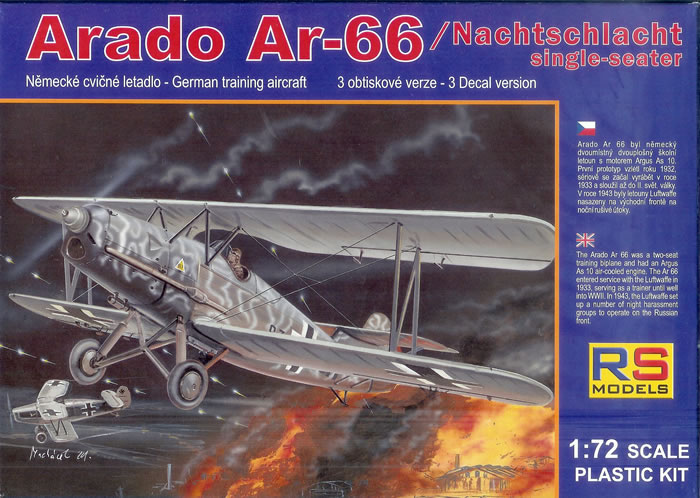
Surprisingly there is no styrene (or resin for that matter) part to cover and close the rear cockpit. Instead a tiny diagram is provided illustrating the shape and giving dimensions. This shape has two curved edges, and would I feel have been better if printed full size to serve as a template, rather than a diagram to be scaled up.
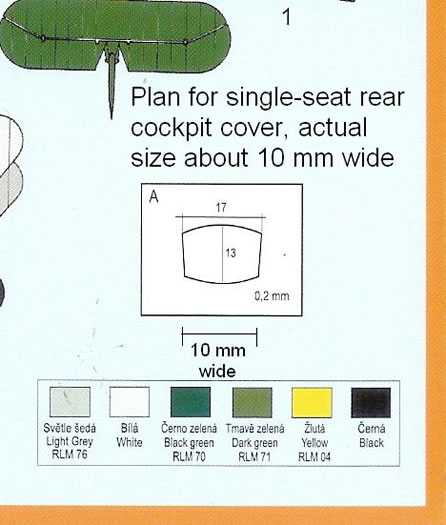
I think most modellers will cope okay, but I also think many will expect to find a kit part to make the singe-seater.
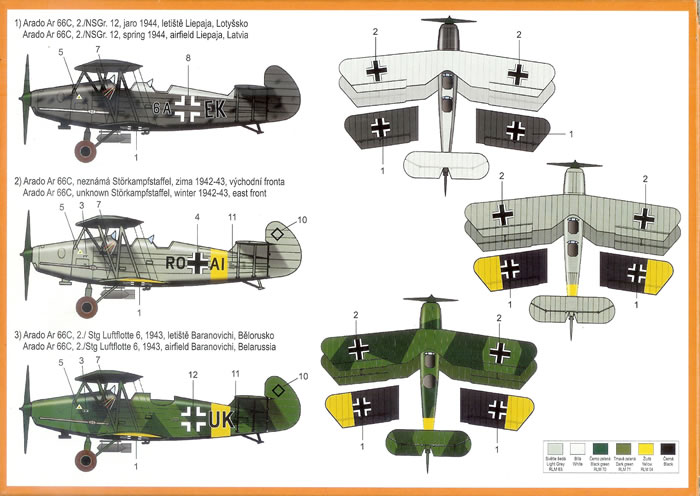
Decals are well registered and suggest good opacity. Like most Czech decals I suspect that they will be quite thin and need to be floated into position, as they tend to adhere extremely well once there is no fluid under them. The three schemes for each boxing are illustrated in the images accompanying this review.
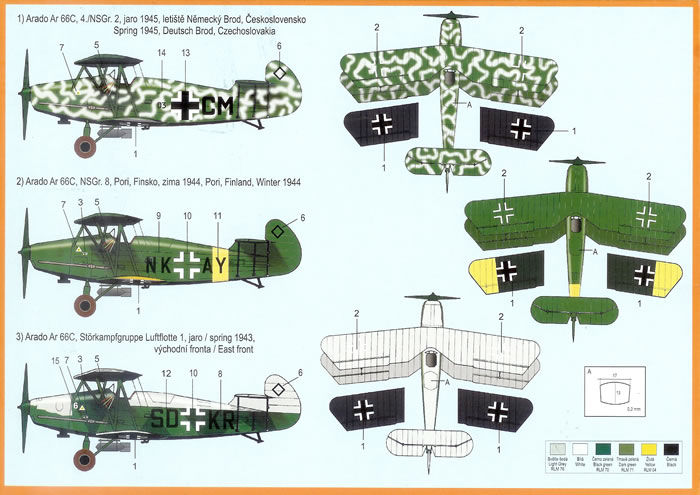
They each feature interesting and attractive schemes in my opinion.
These are nicely executed kits of an interesting subject. They lie in a sort of quality middle ground between true limited run and more mainstream kits. This said, a small amount of cleaning up of flash a doing something about the lack of an engine-face, should result in an attractive and worthwhile model: Recommended.
Thanks to RS Models for the review samples.
Review Text and Images Copyright © 2010 by Mark Davies
Page Created 19 May, 2010
Last updated
19 May, 2010
Back to HyperScale Main Page
Back to Reviews Page |
